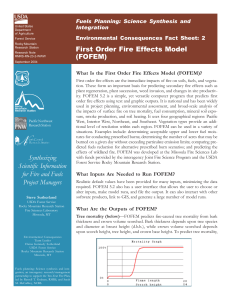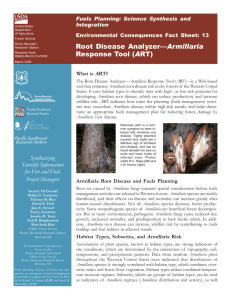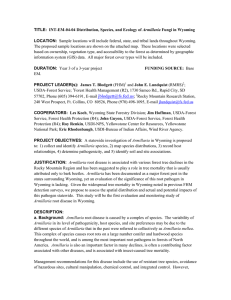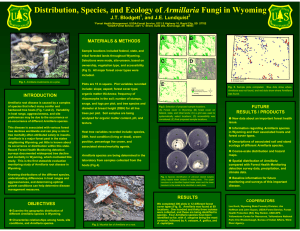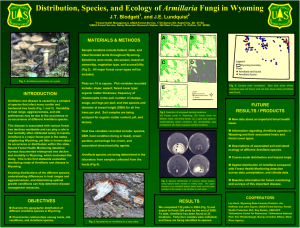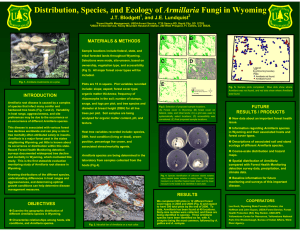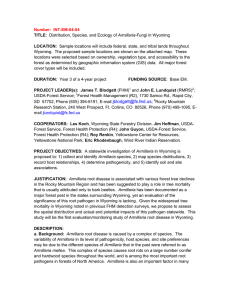On the Environmental Consequences of Proposed Fuel Treatment Activities Steve Sutherland
advertisement
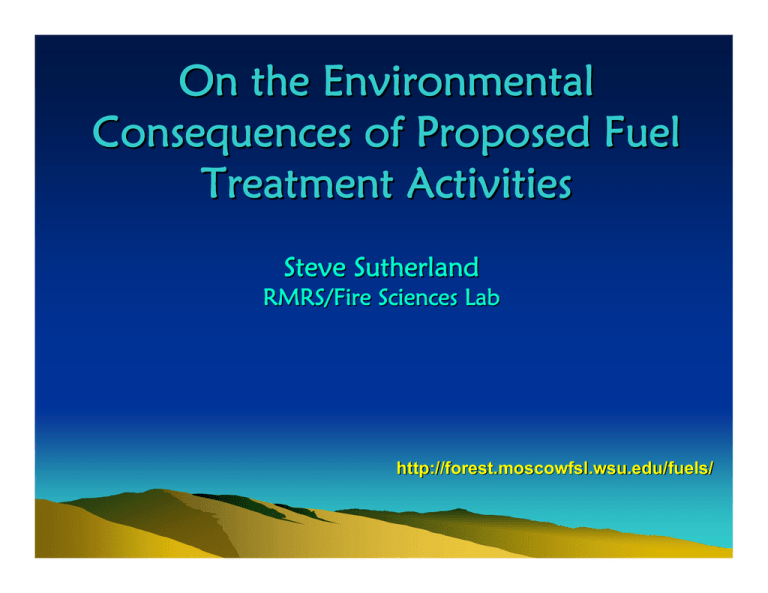
On the Environmental Consequences of Proposed Fuel Treatment Activities Steve Sutherland RMRS/Fire Sciences Lab http://forest.moscowfsl.wsu.edu/fuels/ Fuels Planning Project - Science Synthesis and Integration: A research/management partnership to provide decision support for the management of the dry forests of the Interior West. http://www.fs.fed.us/fire/tech_transfer/ synthesis/synthesis_index.htm Goals The Environmental Consequences team provides fuel treatment planners with the means to estimate the environmental consequences of proposed fuel treatment activities in the dry, interior forests of the western U.S. on: • Air • Soil and Water • Flora • Fauna • Armillaria root disease Products • Tools • Publications • Literature Search • Glossary • Links New Tools Water Erosion Prediction Project Fuel Management Tool (WEPP FuME) Evaluate the impact of fuel management activities on stream sedimentation Bill Elliot, RMRS Factors Affecting Erosion Rates • Soil characteristics – Soil texture – Soil disturbance and/or exposure • Topography – Slope length – Slope gradient – Buffer length • Significant rainfall event Treatments • Undisturbed forest • Thinning (low and moderate) • Prescribed fire (low, moderate, high) • Wildfire (low, moderate, high) • Road traffic (none, low, high) Background sediment yield (tons/sq mi/yr) Inputs Output - comparisons Based on the WEPP Model • A physically based soil erosion model • Adapted from agricultural model, over 15 years of development work by ARS, FS, BLM and others • Built on a large database of climate, soils, and vegetation Understory Response Model Qualitatively predicts the impact of fuel management activities on understory plant survivorship and reproduction Steve Sutherland USDA FS/RMRS Melanie Miller USDI BLM Fire Sciences Lab Factors Affecting Understory Veg • Survivorship – Location of buds – Depth of lethal temperature – Post-treatment recovery • Reproduction – Seed source – Seed bed – Light levels Treatments to Compare Inputs – Initial Stand Conditions Inputs – Treatment Conditions Inputs – Plant Characteristics Outputs - Survivorship Outputs - Reproduction Additional Information Wildlife Habitat Response Model Evaluate the relative effect of fuel treatment activities on terrestrial wildlife habitat David Pilliod*, Katharine Shick, Elena Velasquez *Aldo Leopold Wilderness Research Institute Rocky Mountain Research Station Factors Affecting Wildlife Habitat Elements • Reproduction • Food acquisition • Shelter from predators • Shelter from environment Sources Input - Animal Input – Changes in Habitat Element Output – Changes in Habitat Suitability Background Information Root Disease Analyzer Armillaria Response Tool (ART) Estimate Armillaria root disease risk G.I. McDonald, P.D. Tanimoto, T.M. Rice, D.E. Hall, J.E. Stewart, J.R. Tonn, P.J. Zambino, N.B. Klopfenstein, M.-S. Kim USDA Forest Service, Rocky Mountain Research Station Moscow, Idaho Factors Affecting Armillaria • Soil temperature • Soil moisture Inputs Outputs Treatment Effects Existing Tools • FOFEM first order fire effects model • FVS-FFE fire and fuels extension to forest vegetation simulator • SIS smoke impact spreadsheet • FEPF fire effects planning framework • FCP national fire plan project design and consultation process New Publications • GTR • Fact Sheets Existing Resources • FEIS • Rainbow Series – Fauna – Flora – Air – Soil – Weeds http://forest.moscowfsl.wsu.edu/fuels/





